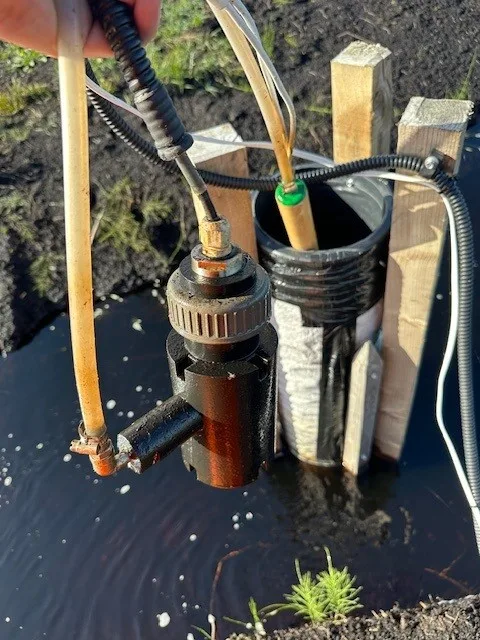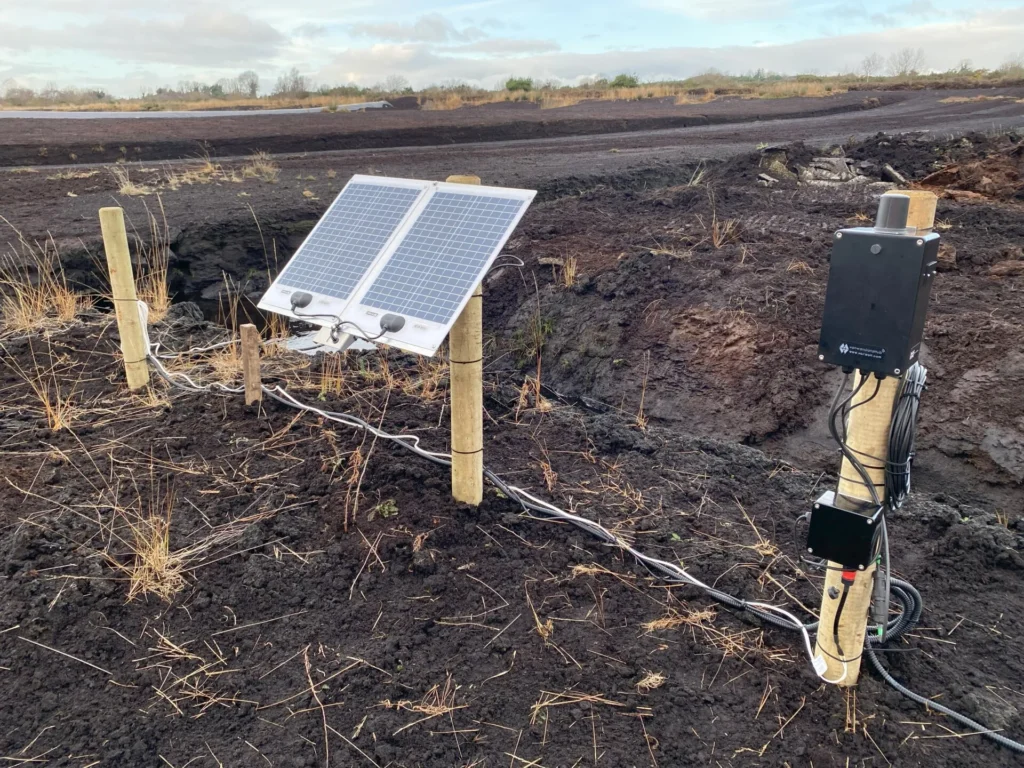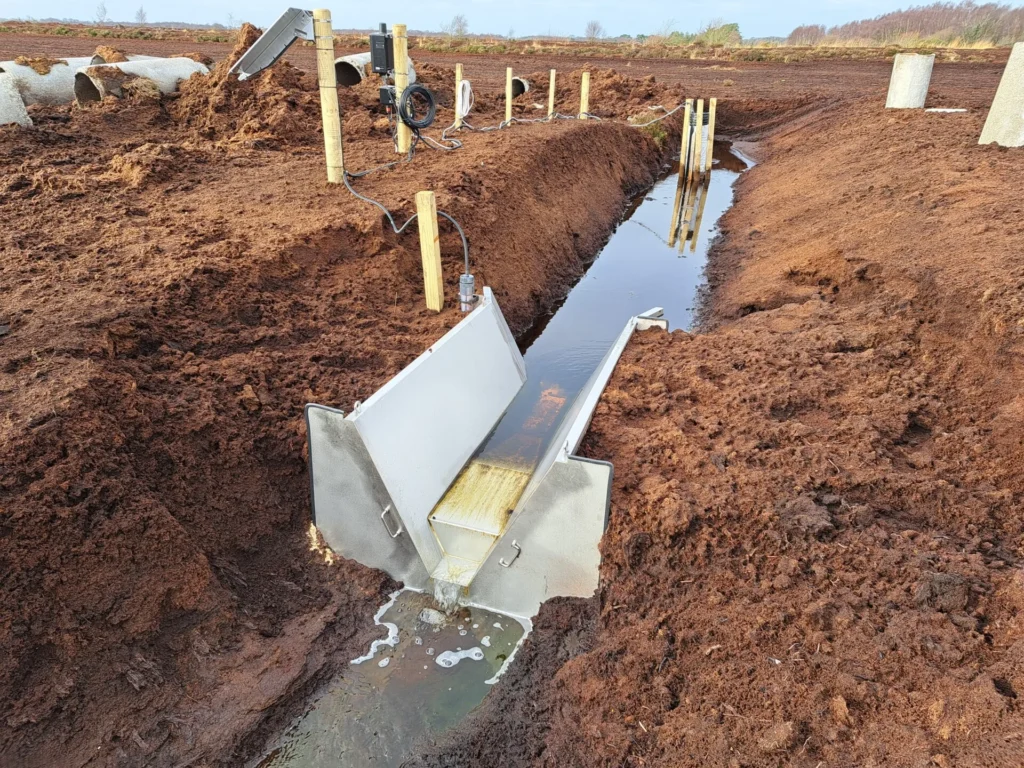Bord na Móna's Peatlands Climate Action Scheme (PCAS) is an initiative aimed at rehabilitating and restoring Ireland's extensive peatlands, which have been degraded by decades of peat extraction.
PCAS objectives include carbon sequestration, biodiversity enhancement, water quality improvement and climate adaptation. Comprising 33,000 hectares of former industrial peatland extraction sites the scheme utilises rewetting, vegetation recovery and emissions reduction activities to deliver it’s core objectives.
The assessment of carbon sequestration with peatlands is a complex task involving assessment of gaseous, surface water, and groundwater fluxes all of which are interrelated and governed by local water levels. Following scheme launch in 2021 our team have assisted with delivery of the four principal objectives focusing on instrumentation to assess fluvial carbon losses/sequestration.
Quantification of fluvial carbon fluxes entails two monitoring two fundamentals; flow and carbon concentration.
Flow monitoring is, in all cases, site specific and requires an understanding of existing drainage provisions (open channel or piped) and anticipated flow rates. With drainage networks on peatlands predominantly open channel (culverts prone to blocking) our solution for PCAS utilises our stainless steel RBC flumes.

Carbon measurement entails laboratory analysis posing a challenge for applications requiring time series data to monitor the efficacy of rehabilitation works such as rewetting. Current industry practice for continuous DOC analysis involves fluorescent dissolved organic matter (fDOM) sensors - a fantastic technology however with some limitations for peatland studies!
The presence of humic acids, varying turbidity and water colouration often interfere with the fluorescence technology and whilst these can be quantified and modelled we sought an improved solution. Following an extensive review of DOC sensor options we identified UV254 as a potential alternative with a proven track record in municipal and waste water applications. UV254 technology measures the absorbance of ultraviolet (UV) light at a wavelength of 254 nanometers (nm), which is strongly absorbed by organic compounds containing aromatic structures and unsaturated bonds, such as dissolved organic matter (DOM).

Our team identified a suitable UV254 sensor with narrow diameter pathlength suitable for monitoring anticipated DOC ranges. The next challenge was to address sensor biofouling risk given the intended installation in remote locations with infrequent site visits. Several options were evaluated including sensor wipers, chemical cleaning systems and high pressure jet cleaning. Opting for the latter we trialled water supply pumps, various jetting sizes and duty cycles ultimately producing an effective lens cleaning system which has performed impeccably for several years now.

Following extensive collaboration with our colleagues at Van Walt, the concept was developed into a telemetered continuous DOC monitoring system utilising UV254 technology, fouling protection, local datalogging with remote access and solar power for off-grid use. Possibly the first system of its kind worldwide!



The PCAS scheme is ongoing until 2026 with preliminary findings due to be published in 2025. Further information regarding the scheme is available at the following link;